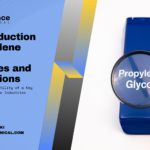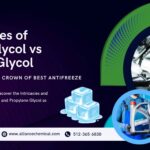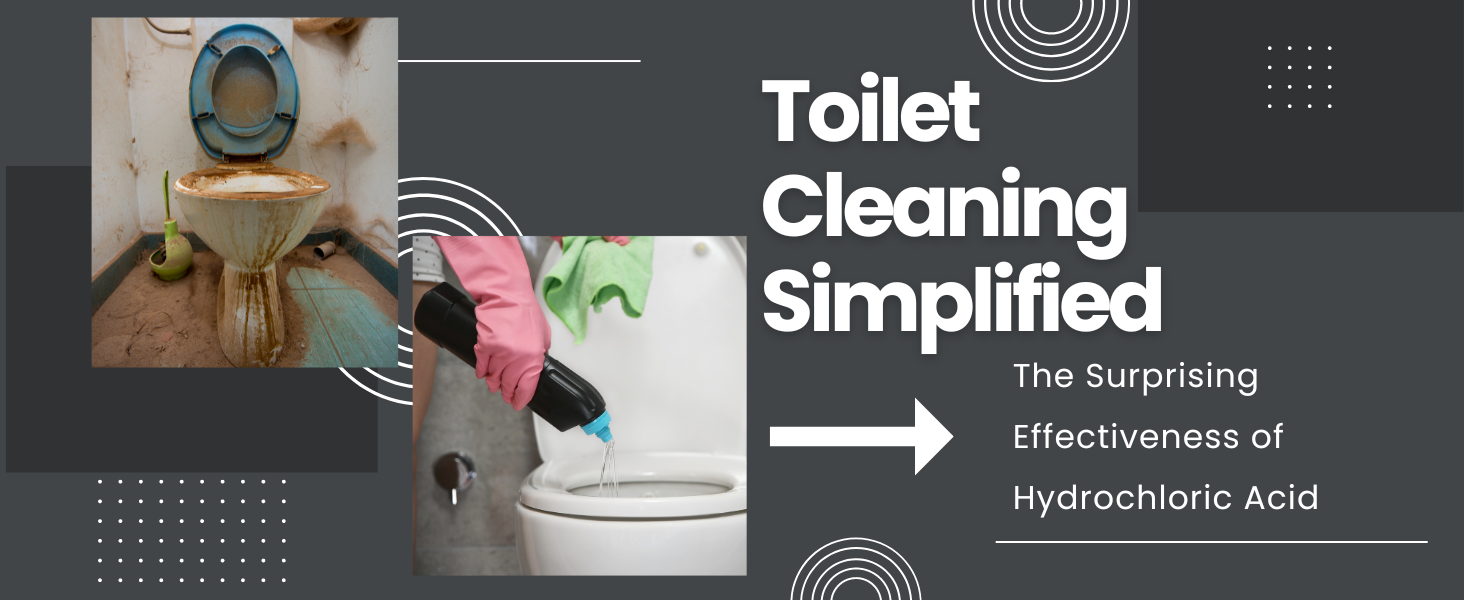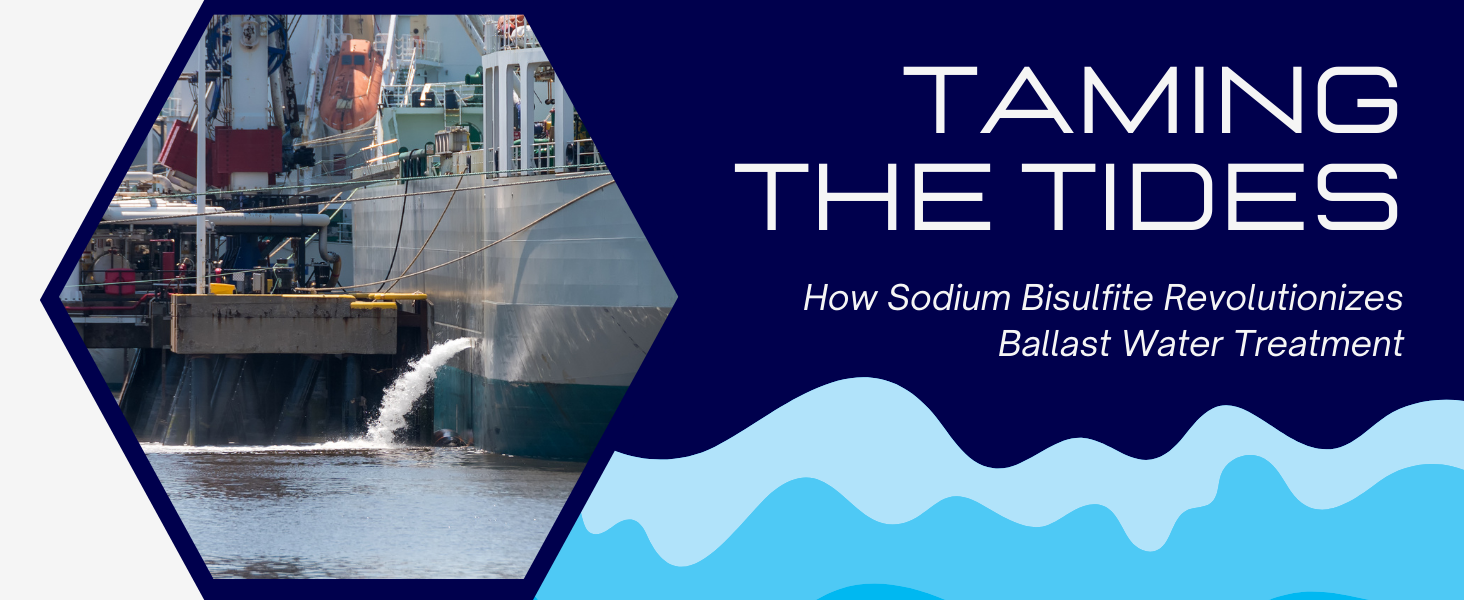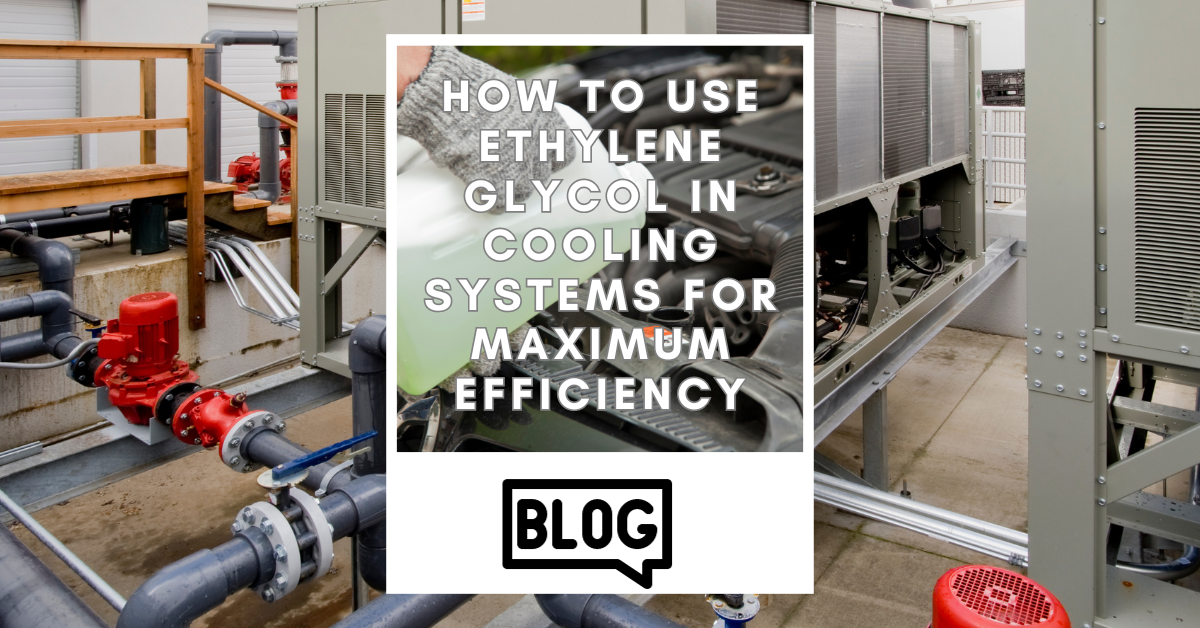
How to Use Ethylene Glycol in Cooling Systems for Maximum Efficiency
- Introduction
- The Basics of Ethylene Glycol
- Types of Ethylene Glycol Solutions
- Ethylene Glycol vs Propylene Glycol
- Application in Automotive Cooling Systems
- Using Ethylene Glycol in Industrial Cooling Systems
- Maximizing Efficiency with Ethylene Glycol
- Safety and Environmental Considerations
- Conclusion
- References and Further Reading
Introduction
Welcome to our comprehensive exploration of ethylene glycol and its pivotal role in automotive and industrial cooling systems. Known for its superior cooling and antifreeze capabilities, ethylene glycol is not just a chemical compound but a cornerstone of efficient temperature regulation in various machinery.
In this detailed guide, we will uncover:
- The fundamental properties of ethylene glycol that make it indispensable in cooling systems.
- How different concentrations of ethylene glycol solutions – 50/50, 60/40, and 100% – cater to diverse cooling needs.
- A comparative analysis of ethylene glycol and propylene glycol, helping you choose the right coolant for your system.
- Best practices for using ethylene glycol in both automotive and industrial applications to maximize efficiency and safety.
Whether you’re a seasoned engineer or a beginner in the world of cooling systems, this post will provide you with essential knowledge and practical tips to optimize your cooling system’s performance. So, let’s dive into the world of ethylene glycol and unlock the secrets to maximizing efficiency in cooling systems.
The Basics of Ethylene Glycol
Ethylene glycol, a dynamic diol compound, stands out in the world of coolants for its unique properties. This colorless, odorless, slightly viscous liquid is pivotal in a variety of industrial and automotive applications, primarily due to its superior heat transfer capabilities and antifreeze properties. In this section, we delve into its chemical essence and the reasons behind its widespread use in cooling systems.
Chemical Properties and Functions
Ethylene glycol (C2H6O2) is synthesized from ethylene (a petroleum derivative), and it exhibits a remarkable ability to absorb water. This synthetic liquid is crucial in applications requiring the lowering of the freezing point or the elevation of the boiling point of water-based solutions. It excels in extreme conditions, remaining fluid in freezing temperatures while resisting boiling in hotter environments, making it a versatile choice for diverse climate challenges.
Advantages of Using Ethylene Glycol
The use of ethylene glycol in cooling systems is characterized by a multitude of benefits. Its primary advantage lies in its dual role as an antifreeze and anti-boil agent, ensuring operational efficiency in both scorching and frigid conditions. Beyond temperature regulation, ethylene glycol is a potent force against corrosion, safeguarding the metallic components of cooling systems from degradation. Its heat transfer efficiency is unparalleled, ensuring optimal thermal conductivity. Additionally, its compatibility with a broad spectrum of materials used in cooling systems, from rubber gaskets to aluminum radiators, makes it a universally accepted coolant solution. Ethylene glycol’s multifaceted advantages extend its utility beyond automotive coolants to industrial HVAC systems, providing a reliable solution for temperature regulation in critical environments.
-
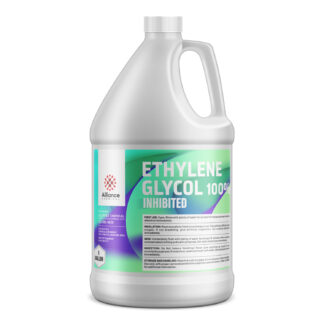 100% Ethylene Glycol Inhibited$22.00 – $3,200.00
100% Ethylene Glycol Inhibited$22.00 – $3,200.00 -
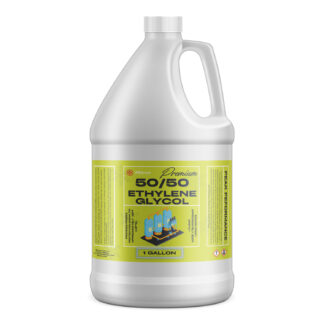 Ethylene Glycol 50/50$20.00 – $3,200.00
Ethylene Glycol 50/50$20.00 – $3,200.00 -
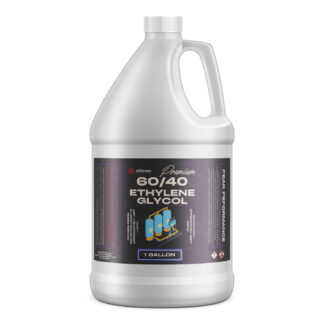 Ethylene Glycol 60/40$20.00 – $3,105.00
Ethylene Glycol 60/40$20.00 – $3,105.00
Types of Ethylene Glycol Solutions
Understanding the various formulations of ethylene glycol solutions is crucial for their effective use in cooling systems. These solutions, differentiated mainly by their concentration and specific additives, are tailored to meet diverse operational demands and environmental conditions.
Understanding 50/50, 60/40, and 100% Solutions
Ethylene glycol is available in different concentration mixes with water, each offering unique benefits:
- 50/50 Mix: A pre-mixed solution containing equal parts of ethylene glycol and water. This balance offers good protection against freezing and overheating, suitable for moderate climates and standard vehicle operations.
- 60/40 Mix: This mix has a higher concentration of ethylene glycol. It provides enhanced protection in extreme temperatures and is ideal for heavy-duty or high-performance applications.
- 100% Ethylene Glycol: Pure ethylene glycol without water is rarely used in its undiluted form due to its decreased efficiency in heat transfer compared to mixed solutions. It’s primarily used in specialized industrial applications where water presence is undesirable.
Selecting the right ethylene glycol solution depends on various factors like ambient temperature, vehicle type, and operational conditions. For instance, a 50/50 mix might be ideal for everyday vehicles in temperate regions, while a 60
In the world of coolants, the choice often comes down to ethylene glycol and propylene glycol. Both are effective, but they have distinct properties and applications that make them suitable for different scenarios. This section provides a detailed comparison to help you make an informed decision. While both EG and PG are used as antifreeze and coolant agents, they differ significantly in terms of toxicity, biodegradability, and performance under various conditions: Choosing between EG and PG also depends on the specific application and the required safety standards: Understanding these differences will guide you in selecting the right glycol-based coolant for your specific needs, ensuring both efficiency and safety in your operations. Ethylene glycol plays a critical role in the automotive industry, particularly in cooling systems of vehicles. This section explores its usage, benefits, and maintenance practices in automotive applications. Ethylene glycol, when mixed with water, forms a coolant that is essential for maintaining an engine’s optimum operating temperature. It prevents the engine’s cooling system from freezing in cold weather and boiling over in hot weather. Additionally, it helps protect the engine and cooling system components from corrosion and scale buildup, extending the lifespan of these parts. The concentration of ethylene glycol in coolant mixtures can vary. Commonly, a 50/50 mix of ethylene glycol and water is used, providing effective freeze and boil protection while maintaining optimal heat transfer. In colder climates or for engines operating under extreme conditions, a higher concentration of ethylene glycol may be required. It’s important to follow the vehicle manufacturer’s recommendations to ensure proper cooling system performance and protection. Regular maintenance of the cooling system is vital for its longevity and efficiency. This includes checking the coolant level and concentration, flushing and replacing the coolant at recommended intervals, and inspecting for any signs of leaks or corrosion. Using quality ethylene glycol-based coolants and adhering to a proper maintenance schedule can significantly enhance the performance and lifespan of your vehicle’s cooling system.Ethylene Glycol vs Propylene Glycol
Comparative Analysis of Cooling Efficiency
Application in Automotive Cooling Systems
Role of Ethylene Glycol in Automotive Coolants
Understanding Mixing Ratios and Their Impact
Maintenance Tips for Ethylene Glycol-based Coolants

Application in Automotive Cooling Systems
Ethylene glycol plays a critical role in the automotive industry, particularly in cooling systems of vehicles. This section explores its usage, benefits, and maintenance practices in automotive applications.
Role of Ethylene Glycol in Automotive Coolants
Ethylene glycol, when mixed with water, forms a coolant that is essential for maintaining an engine’s optimum operating temperature. It prevents the engine’s cooling system from freezing in cold weather and boiling over in hot weather. Additionally, it helps protect the engine and cooling system components from corrosion and scale buildup, extending the lifespan of these parts.
Understanding Mixing Ratios and Their Impact
The concentration of ethylene glycol in coolant mixtures can vary. Commonly, a 50/50 mix of ethylene glycol and water is used, providing effective freeze and boil protection while maintaining optimal heat transfer. In colder climates or for engines operating under extreme conditions, a higher concentration of ethylene glycol may be required. It’s important to follow the vehicle manufacturer’s recommendations to ensure proper cooling system performance and protection.
Maintenance Tips for Ethylene Glycol-based Coolants
Regular maintenance of the cooling system is vital for its longevity and efficiency. This includes checking the coolant level and concentration, flushing and replacing the coolant at recommended intervals, and inspecting for any signs of leaks or corrosion. Using quality ethylene glycol-based coolants and adhering to a proper maintenance schedule can significantly enhance the performance and lifespan of your vehicle’s cooling system.
Using Ethylene Glycol in Industrial Cooling Systems
Ethylene glycol is not just pivotal in automotive applications but also plays a significant role in industrial cooling systems. This section sheds light on its applications, benefits, and best practices in the industrial context.
Industrial Applications of Ethylene Glycol
In industrial settings, ethylene glycol is used in a variety of cooling and heating applications. Its primary function is to maintain stable temperatures in large-scale systems, such as HVAC units, refrigeration systems, and process cooling systems. The chemical’s ability to prevent freezing and boiling while offering corrosion protection makes it ideal for these applications.
Choosing the Right Ethylene Glycol Solution
Selection of the appropriate ethylene glycol solution in industrial applications depends on several factors, including operating temperature ranges, system material compatibility, and environmental considerations. Solutions like inhibited ethylene glycol, which contain additives to protect against corrosion in metal piping and components, are often preferred in industrial settings.
Safety and Environmental Considerations
While ethylene glycol is effective, it requires careful handling due to its toxic nature. Proper storage, handling, and disposal are crucial, especially in large-scale industrial use. Additionally, environmental considerations should be taken into account, as ethylene glycol can be harmful if released into the environment. Implementing safety protocols and considering eco-friendly disposal methods are essential practices in industrial applications.
-
 Ethylene Glycol ACS Grade$23.10 – $3,300.00
Ethylene Glycol ACS Grade$23.10 – $3,300.00 -
 Ethylene Glycol Semiconductor Grade$21.00 – $3,300.00
Ethylene Glycol Semiconductor Grade$21.00 – $3,300.00
Maximizing Efficiency with Ethylene Glycol
Optimizing the performance of cooling systems with ethylene glycol involves more than just selecting the right type of glycol solution. This section explores best practices and strategies to ensure maximum efficiency and effectiveness of ethylene glycol in cooling systems.
Optimizing Heat Transfer and Cooling
Effective heat transfer is critical for the efficiency of any cooling system. The key to maximizing this with ethylene glycol lies in maintaining the right concentration and fluidity of the coolant. Regular monitoring and adjustments based on operating conditions and environmental factors are essential to sustain optimal heat transfer and cooling performance.
Maintaining Your Cooling System
Regular maintenance is crucial to the longevity and efficiency of cooling systems using ethylene glycol. This includes periodic checks and replacement of the coolant, monitoring for any signs of corrosion or leaks, and ensuring that the system is free from contaminants. Proper maintenance not only extends the life of the cooling system but also ensures it operates at peak efficiency.
Enhancing System Life and Performance
To further enhance the life and performance of cooling systems, it’s important to use high-quality ethylene glycol solutions and to follow the guidelines provided by equipment manufacturers. Utilizing inhibitors in the glycol solution can also play a significant role in preventing corrosion, scaling, and other issues that might impede system performance and longevity.
Safety and Environmental Considerations
While ethylene glycol is an effective coolant and antifreeze agent, it is important to handle and dispose of it responsibly due to its toxic nature and potential environmental impact. This section outlines key safety and environmental practices associated with the use of ethylene glycol.
Handling and Storage Best Practices
Ethylene glycol should be handled with care, using appropriate safety equipment like gloves and goggles. It should be stored in well-ventilated areas, away from heat sources and out of reach of children and pets. Ensuring proper labeling and storage in designated containers can prevent accidental ingestion and exposure.
Environmental Impact and Disposal
Ethylene glycol can be harmful to the environment, particularly to aquatic life. It should never be disposed of in waterways or the ground. Instead, follow local regulations for hazardous waste disposal. Companies should have a disposal plan in place for ethylene glycol, which might include recycling or treatment by certified waste management services.
Emergency Response to Ethylene Glycol Spills
In the event of a spill, it is crucial to act quickly to minimize environmental damage and health risks. Spills should be contained and cleaned up using appropriate absorbent materials, and disposed of according to local hazardous waste management regulations. Always report significant spills to the relevant environmental protection authorities.
Conclusion
Ethylene glycol has emerged as an indispensable component in both automotive and industrial cooling systems due to its exceptional properties in heat transfer and antifreeze capabilities. Throughout this guide, we’ve explored the various aspects of ethylene glycol, from its basic properties and types of solutions to its applications in different cooling systems and the crucial safety and environmental considerations.
Understanding the nuances of ethylene glycol, including the differences between EG and PG, the significance of different concentration mixes, and the best practices for maintenance and safety, is vital for anyone involved in the management or maintenance of cooling systems. The effective use of ethylene glycol not only enhances system efficiency and longevity but also ensures safer operational environments.
We hope this comprehensive guide provides you with valuable insights and practical knowledge for optimizing your cooling systems using ethylene glycol. Remember, always prioritize safety and environmental responsibility in your handling and usage of ethylene glycol.




